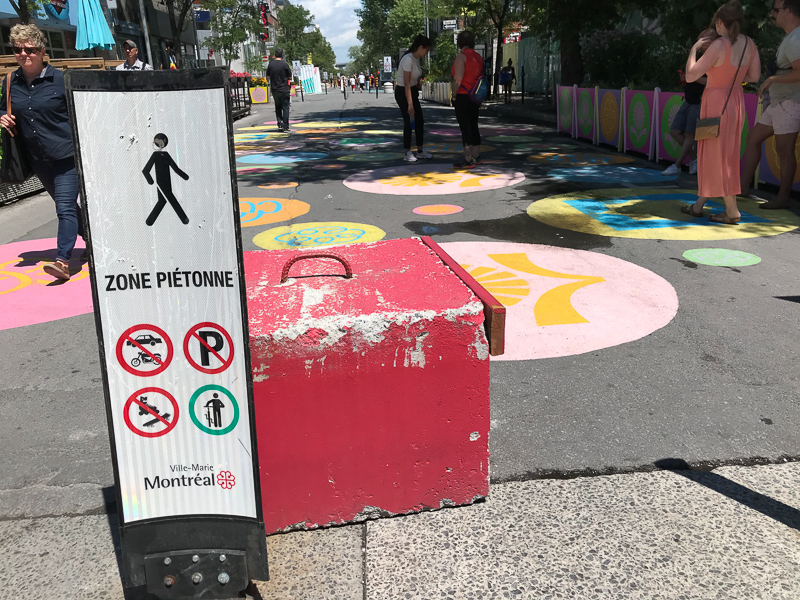I like to walk around. In Los Angeles, I like to walk around my neighborhood and walk to the office. Here in Montréal, I like to explore areas by walking. Anywhere in the work, I like to walk around in the wilderness. When you walk around, you can see things in a different perspective. In the city, you see the little details that would otherwise just blur by, whether it’s how people decorate and tend their living spaces, how nature coexists with city infrastructure, or just how people interact.
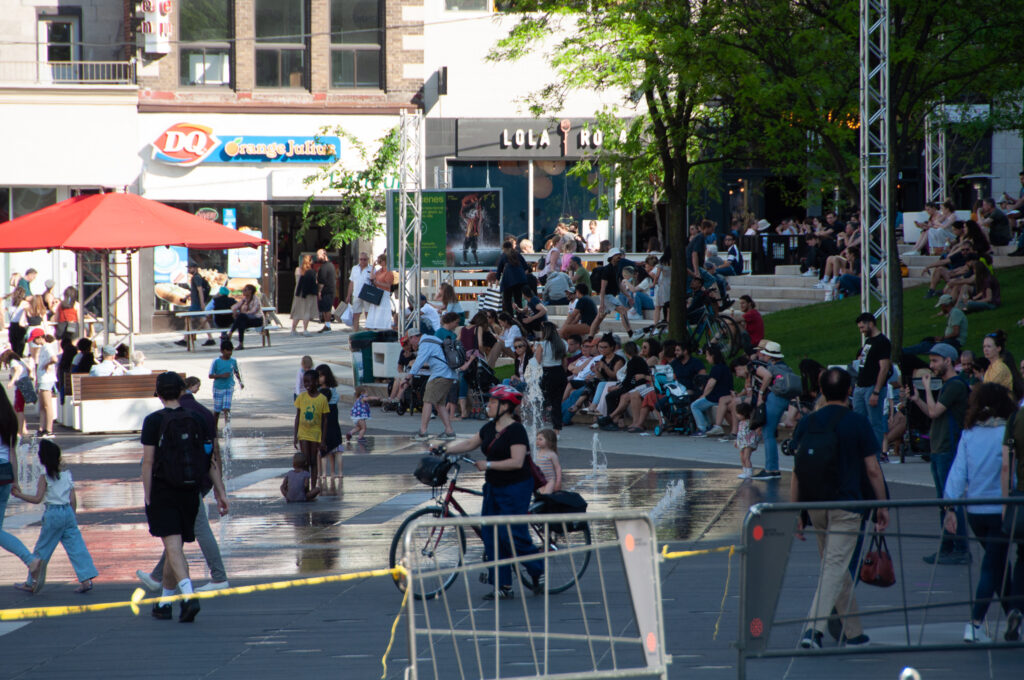
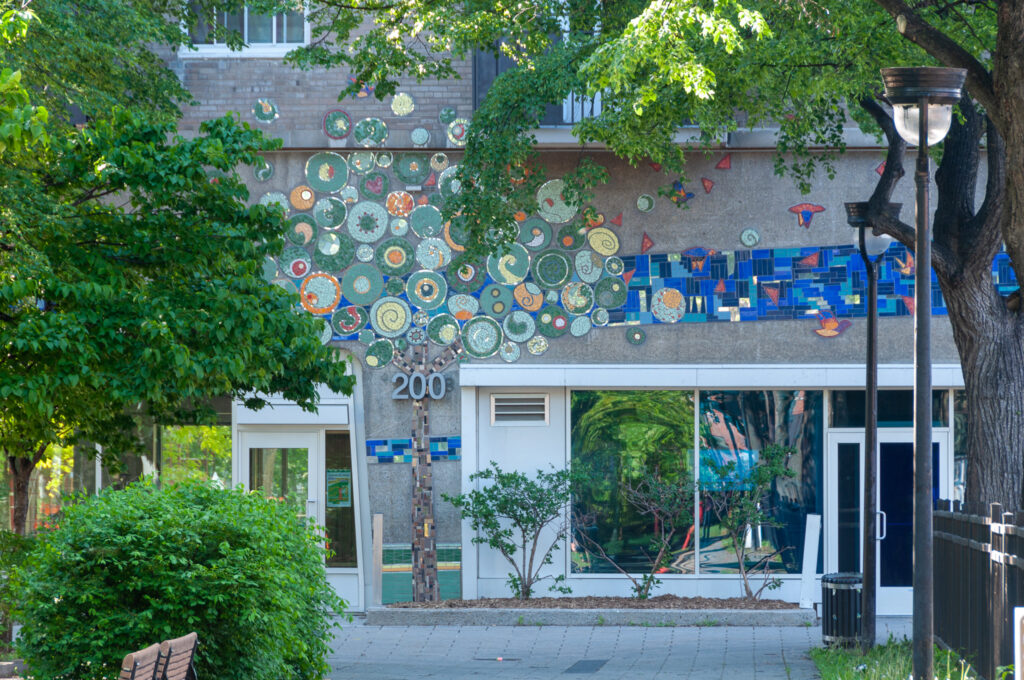
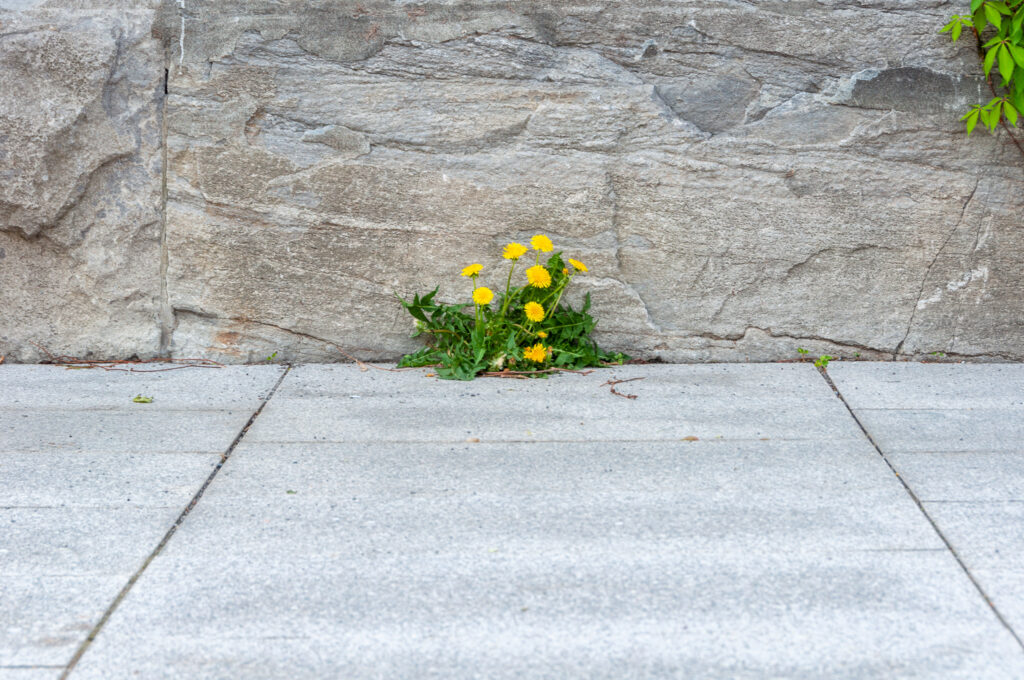
As a pedestrian-by-choice, I have been gradually radicalized into an “urbanist” perspective. Listening to podcasts like The War on Cars, YouTube channels like City Beautiful or Not Just Bikes and similar sources are gradually turning me into a tedious scold when it comes to talking about car-centric cities.
As I’ve been documenting here, Montréal in summer is a very walkable city. This assessment may be biased as we’re living in the Ville-Marie borough, which scores as the 2nd best neighborhood for walkability in Montréal. Most of the things we need (whether grocery stores, post office, restaurants, or entertainment) can be found in easy walking distance, and for other things, it’s just a quick hop on the metro or a Bixi bike.
Starting with programs developed in 2020 to help people get out (while maintaining social distancing) during COVID, Montréal seems to have established a tradition of creating pedestrian-only walk streets during the summer. Today, in 2022, there are ten such areas, including Rue Sainte-Catherine, the main artery of the Gay Village where we’re living. Restaurants and bars put patios (terrasses) out across the sidewalks, stores exhibit wares, and the various festivals set up performances.
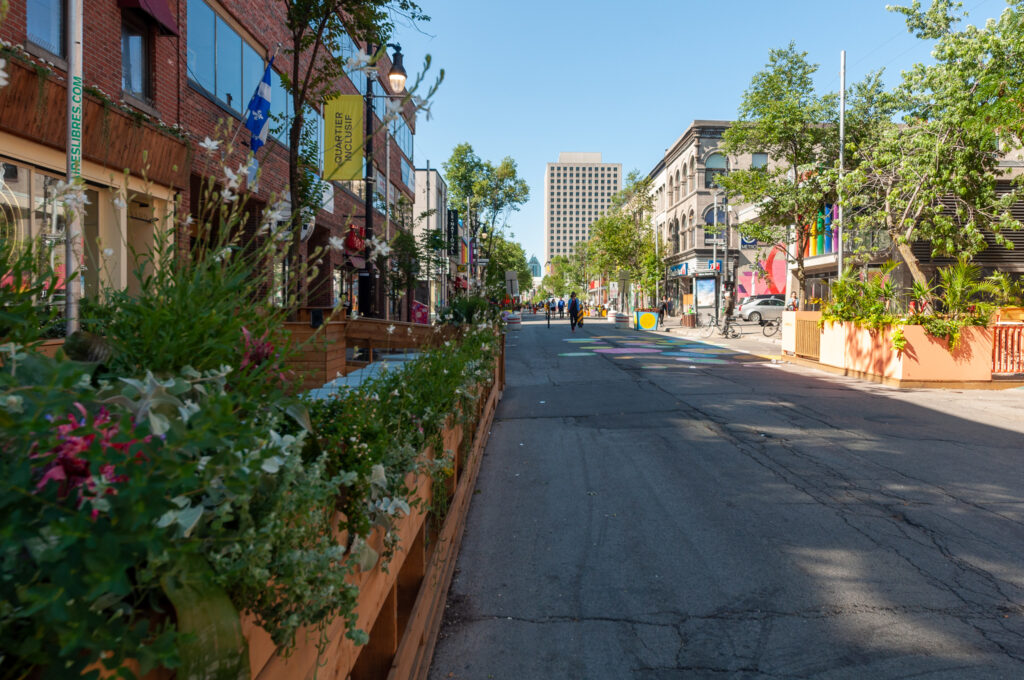
People love the walk streets! By late afternoon, there will be throngs of people on Sainte-Catherine, some obviously tourists, some obviously local, and some unhoused. I see people from all [ahem] walks of life out there, walking and hanging out and meeting one another and eating and drinking and buying stuff.
According to the news articles above, and compelling videos like this one, the local businesses and business associations are pretty enthusiastic about walk streets too. Pedestrian-only zones increase spending in the areas, drive tourism, and boost the overall economy. That’s not to say you won’t see occasional mention of store-owners complaining (especially those who sell things that aren’t condusive to pedestrian-street purchases, e.g., furniture stores).
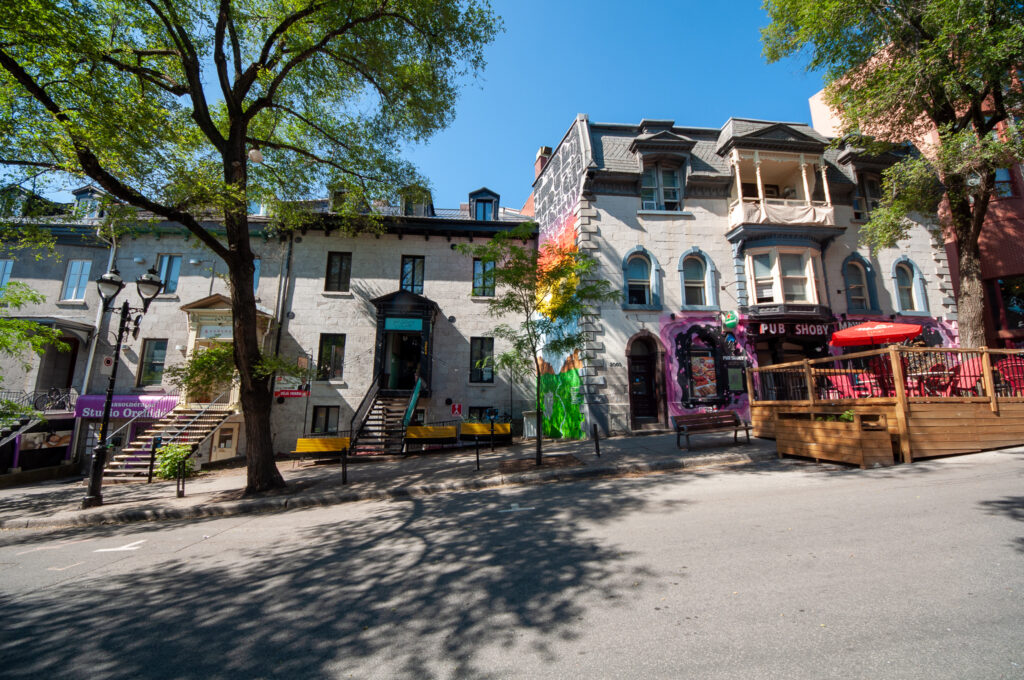
It seems, overall, that this new tradition is a boon to a lot of people.
“But surely, Sylvain,” I hear you say. “If walkability bestows these many benefits to rich and poor alike, unquestionably the all-powerful Invisible Hand of the Free Market would have made walk-streets ubiquitous, even in Los Angeles? The fact that they aren’t there proves you’re overlooking some dark side. Check and mate!”
I’ve thought a lot about this. Because, in Los Angeles (County) there are permanent walk-streets: the Third Street Promenade in Santa Monica, for example, or the Venice Beach Boardwalk. All over Los Angeles, walk streets pop up briefly for farmer’s markets. There are also a lot of privatized walk-streets, too, often (re)developed by that guy who wants to be mayor: The Grove, Americana at Brand, etc. It’s sort of the same idea: outdoor spaces with shopping, dining, drinking, entertainment. The private ones are also much more controlled environments, with central oversight and curation of the vendors, private security, and pay-by-the-hour parking.
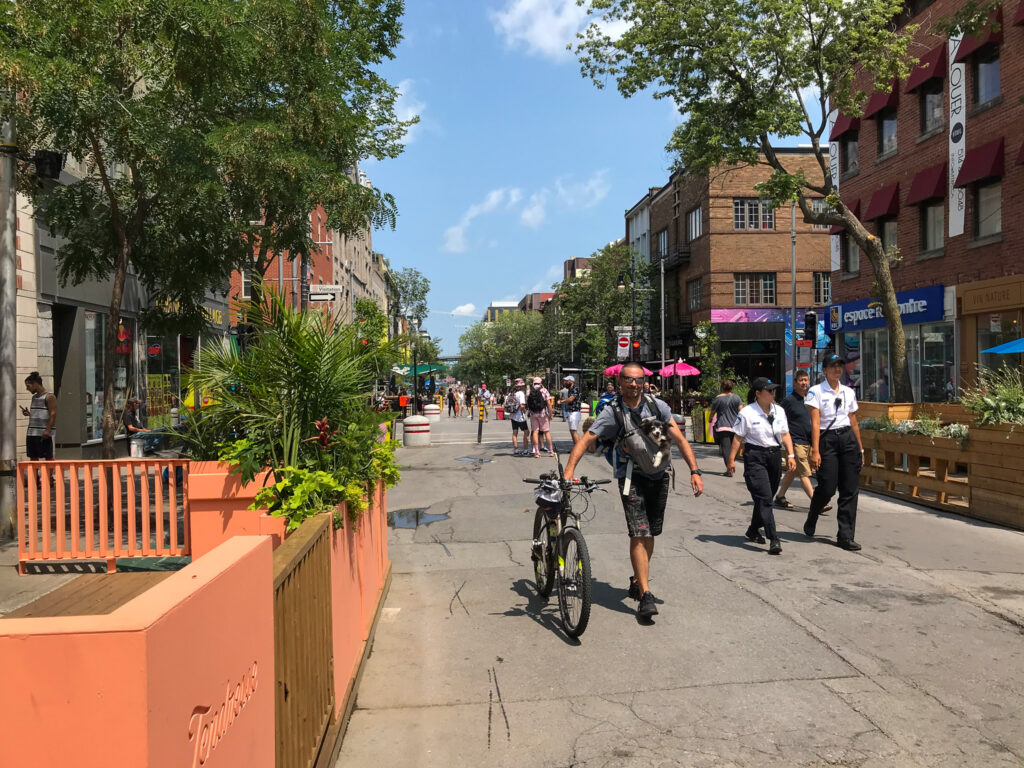
Up above, I mentioned that Ville-Marie has a very high walkability score. I was surprised to find that Los Angeles does too. Rated as an aggregate, Montréal scores a 65 for walking, 67 for transit, and 73 for biking on a scale of 1-100. Los Angeles scores a 69 for walking, 53 for transit, and 59 for biking. You can read the methodology if you want to know how they compute those numbers.
So why does Los Angeles feel so much less walkable to me than Montréal? Well, one obvious thing is that Montréal is much more pedestrian-friendly. I don’t feel like I’m risking my life every time I go for a walk here. If I’m at a corner (even without a stop sign), car drivers in Montréal go out of their way to acknowledge my presence, and most of the time gesture for me to cross first. In Los Angeles, I’ve had driver intentionally nudge me with their cars when I’m using a crosswalk in “their” road, and have had more near misses from distracted drivers than I can count. There’s traffic — bad traffic — in both cities, and I’ve seen frustrated and rude drivers in both places. I don’t sense the pervasive anger among drivers in Montréal, though.
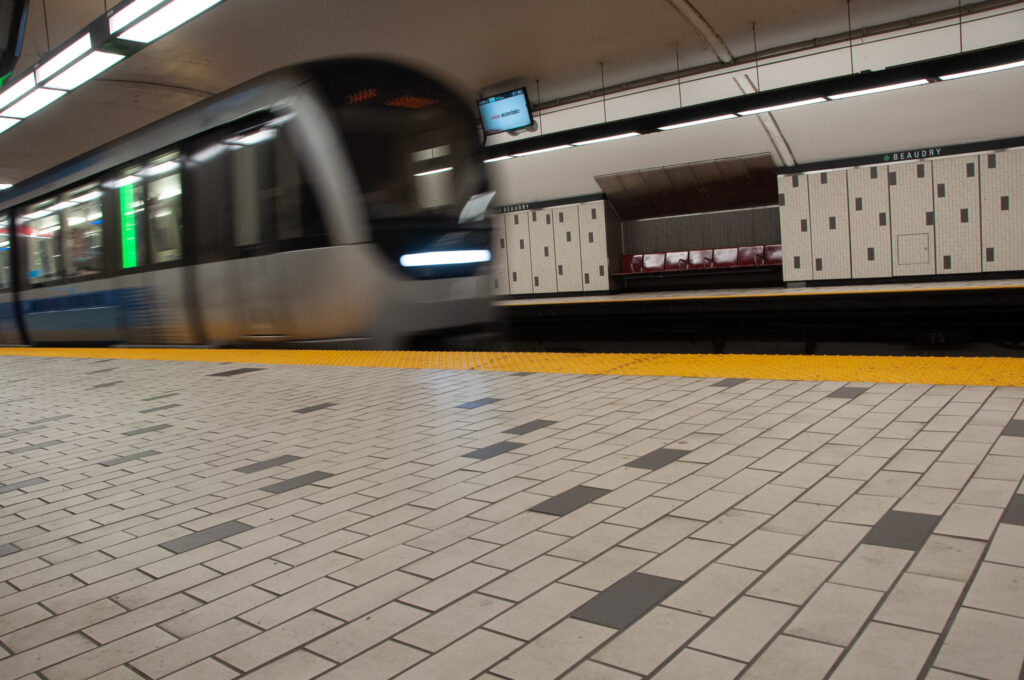
There’s a qualitative difference in the public transportation too. Don’t get me wrong — I think Los Angeles’ public transportation gets a bad rap, but even so, the experience isn’t nearly as nice as Montréal’s. The buses and subways and stations in Montréal are fairly clean, the buses and subways run frequently, and the ticketing system relatively straightfoward (although there have been some confusing issues with the new rate increases).
So what’s the difference? Here I go again with the radicalism, but I think one big differentiator is who uses the resources. In Los Angeles, I think there is a significant class difference in the general population that gets around by driving their own cars and the general population that uses public transit. I don’t get the sense that this is as much a factor in Montréal. In the morning on the metro, I see executives in suits, students, parents with kids in strollers, people with tote bags full of groceries, old people, young people, people who look very put-together, slobs like me, and so on.
People seem to treat the shared resources like the Montréal métro with respect, too. That’s not to say there’s no graffiti, but I don’t see people tossing garbage on the floors. I haven’t seen anyone here smashing a fare machine in a fit of rage, like I once witnessed on LA’s Exposition Line.
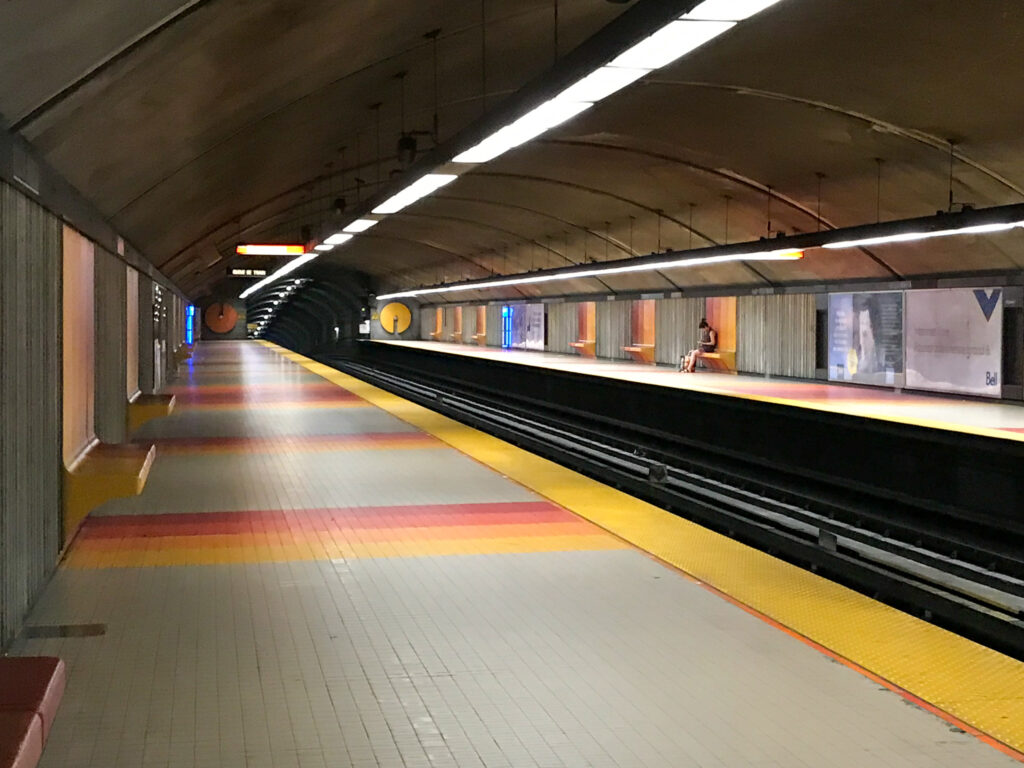
One point of comparison where Los Angeles comes out on top is accessibility. The sidewalks of Los Angeles, where they exist and and are not utterly compromised by tree roots or scattered e-scooters, generally have access ramps at corners. Buses have wheelchair ramps, and every metro station I’ve been to has elevators for access. The sidewalks in Montréal are more varied, and in many areas are probably not navigable by wheelchairs. Buses in Montréal are wheelchair accessible, but metro stops all have stairs and/or escalators and a fair number have no elevators.
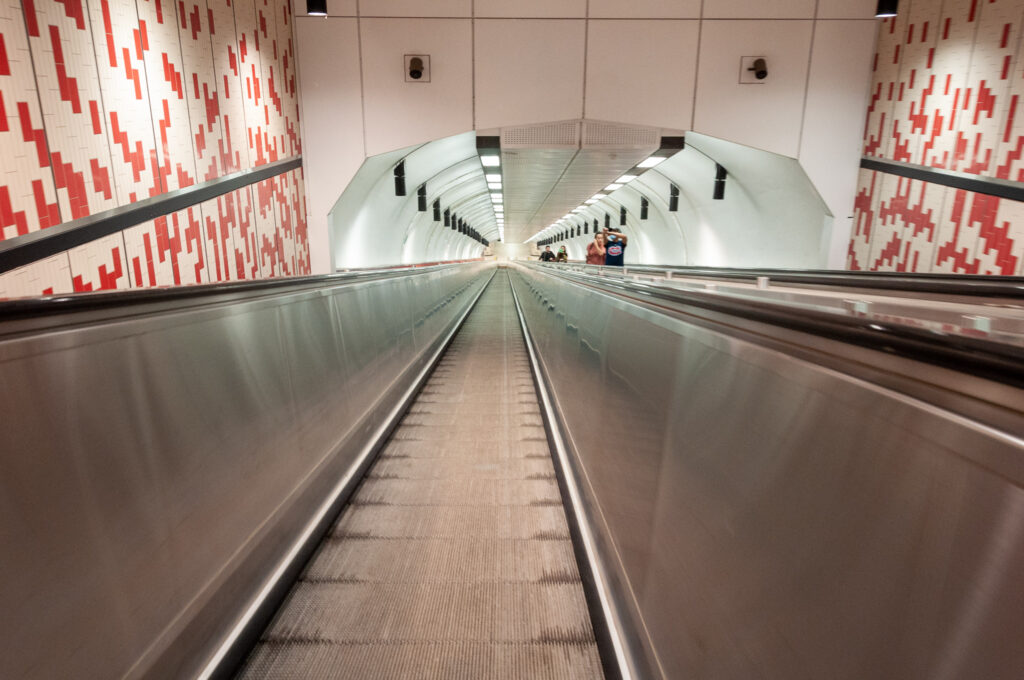
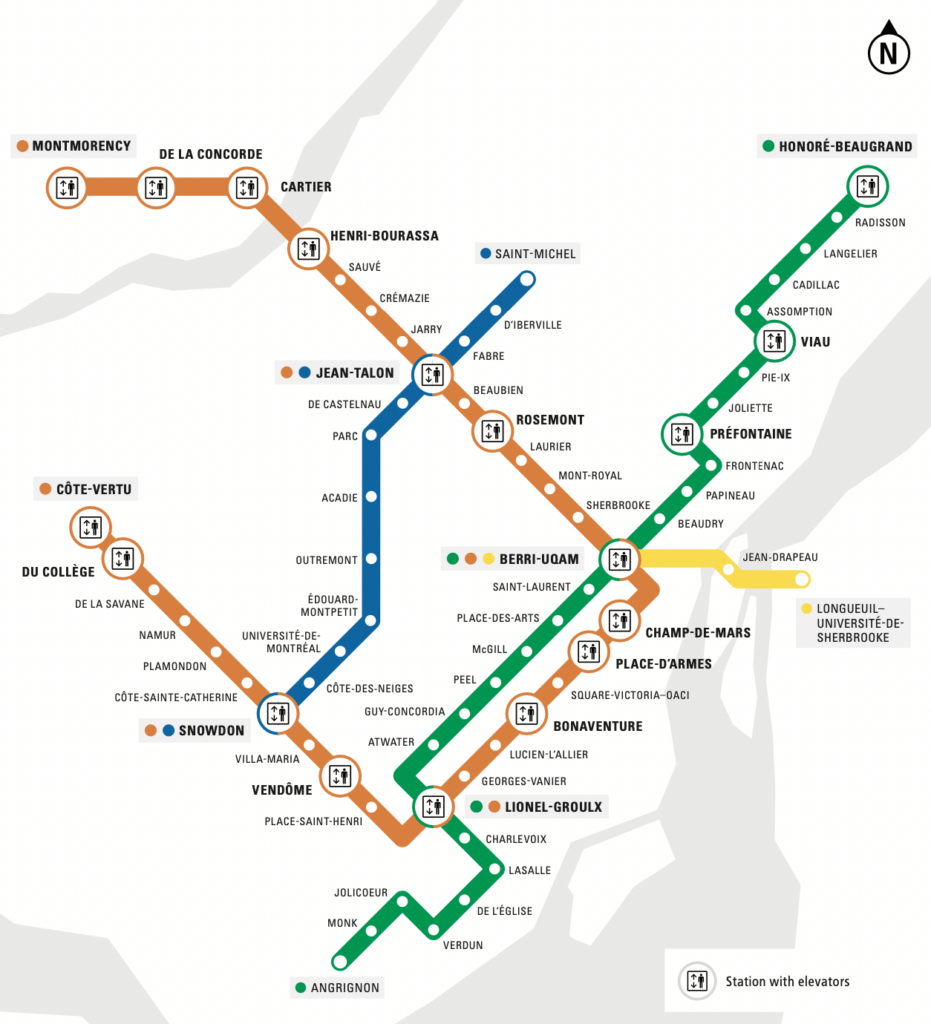
The one last comparison is one that I hesitate to bring up because it’s not only fraught, but highly subjective. That is the sense of safety. In Los Angeles, when I walk places or take public transportation, I’m always on high defensive alert. Montréal doesn’t feel nearly as threatening. Every place has its dangers, whether city or small town, and you have to have some knowledge about the place to understand the threat profile. I don’t think the sense of relative safety is purely due to my lack of knowledge. In a future post, I’ll do a deep dive on the differences in crime in the two cities (but that will require a lot more research).
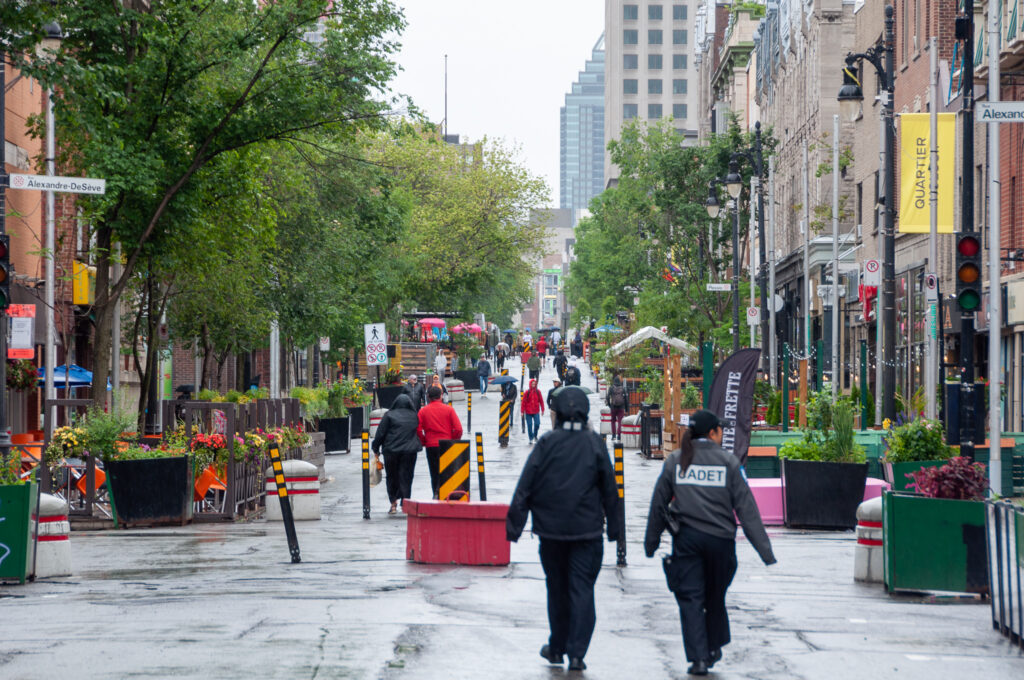
So, in closing, what’s my point? I’m sure I had one when I started, but like most hikes I’ve done around here, I started out with one place in mind and ended up somewhere else. It’s more about the journey than the destination. I hope you weren’t in a hurry to arrive anywhere particular.

